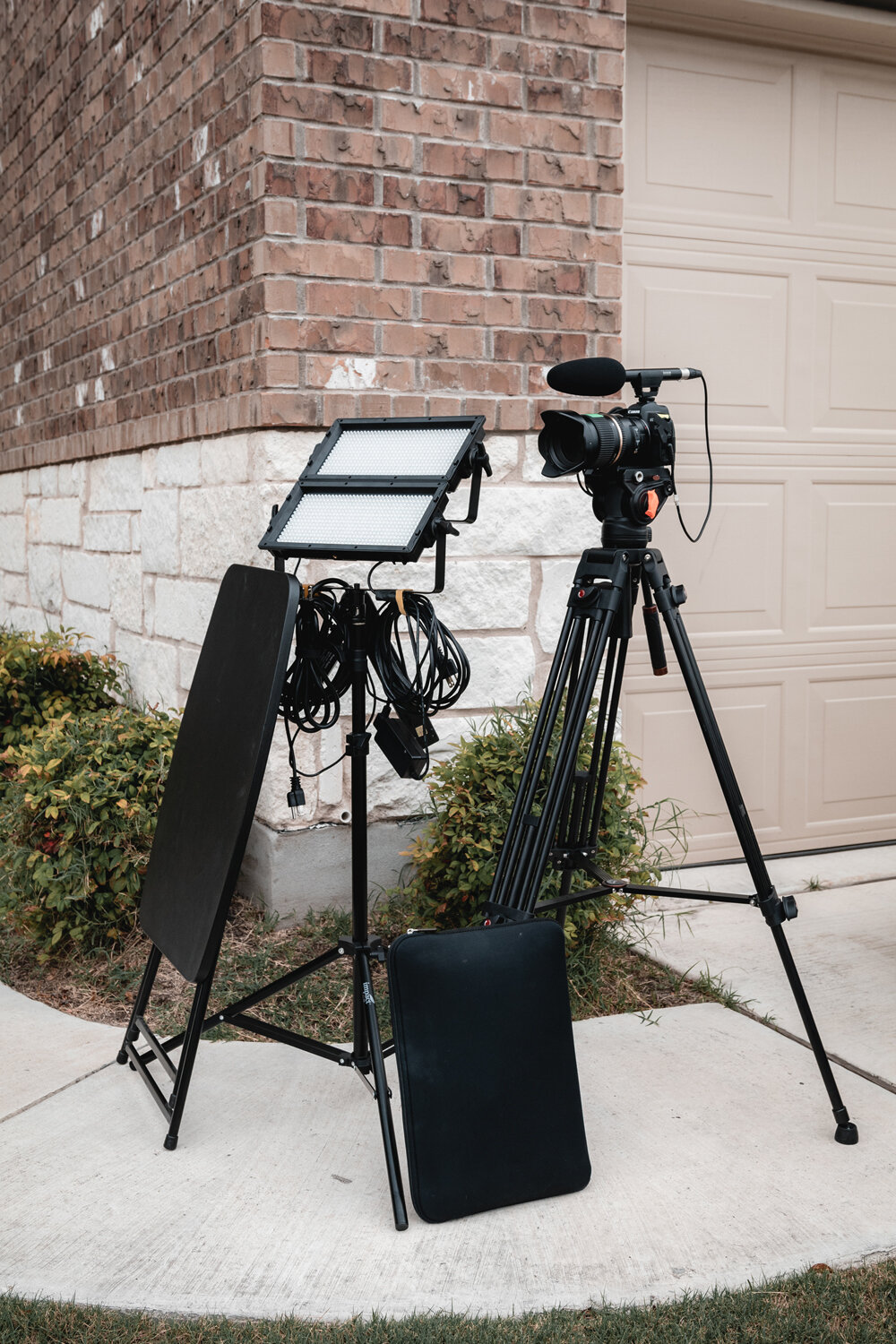Video Solutions in the Age of COVID-19: Remote Video Production
In the era of COVID-19, companies have faced unprecedented challenges in the way they communicate with their workforce and their consumers. Professional video marketing and internal video communication production has taken a big hit due to social distancing requirements and work-from-home guidelines. Yet the need for this type of communication is greater than ever before.
The solution? Remote video production.
This innovative video production technique allows for your employees and marketing teams to utilize professional expertise and equipment without ever needing a production team physically in the room. In this article, we’ll talk about the applications, break down the process that we go through with our clients, and outline some limitations that come with this method of production.
What Remote Video Production Can Be Used For
First, let’s talk a little about how you can use remote video production. While you shouldn’t expect any blockbuster films to be produced, it is a handy solution to some of companies’ most pressing needs. It is perfect for scenarios like:
Unboxing videos
Product demos
Testimonials
Company addresses or announcements
In general, the set-up works best when one individual is directly addressing their audience. If you have a different video need, a creative production team can work with you to come up with a unique solution.
How Remote Video Production Works
It may sound complicated, but remote video production can be broken down into six fairly simple steps:
Pre-production Consultation
Equipment Drop-off
Equipment Set-up Walkthrough
Video Recording
Equipment Pick-up
Post-production
Let’s take a closer look at what each of these steps entail.
Pre-Production Consultation
Once video objectives and goals are established, the production team will consult with the client and talent about the area that they plan to film in. The talent may be asked to share photos and measurements of the space to paint a complete picture of what the shooting location looks like.
This allows the team to build a customized diagram, roughly to scale, of what the complete camera set-up will look like. If changes need to be made, like moving a small piece of furniture, the team can communicate these needs or seek an alternative setup.
The production team will also coordinate a time for contactless equipment drop-off at the talent’s location.
2. Equipment Drop-off
The production team will drop off the equipment at the designated location and time. The talent can expect to receive a camera, tripod, light, lavalier microphone, laptop, small table, and additional batteries. However, this is subject to change depending on location and goals of the video. Regardless, each piece of gear will be optimized for user-friendliness with features like:
Pre-built setups: The camera will come mounted to a tripod and any lights will already be attached to their stands.
Color-coded equipment controls: This takes the guesswork out of any operations the client may have to perform.
Remotely controlled camera operation: Once the camera is plugged into the laptop, the client need not worry about getting the camera settings just right. Everything is controlled remotely by the production team.
Once the gear is safely inside, the team returns to their office to prepare for the remote shoot.
3. Equipment Set-up Walkthrough
Once everyone is set and the laptop is connected to the talents’ wifi, the talent, client, production team, and any other parties involved can hop on a Zoom call.
The production team will walk the talent through the entire set-up process, ensuring everything is positioned correctly, turned on, and ready to record. For those who want to start preparing the area before the call, the team will also include a physical set-up checklist with the gear.
4. Video Recording
Zoom screen-sharing will allow all parties on the call to see the set-up through the lens of the camera. Adjustments can be made if deemed necessary by the marketing agency or client team on the call.
Once the production team calls action, the camera will start recording as if the team were present in the room. And, similar to an in-person production, the team can run through multiple takes until the client is confident in their delivery. Depending on the goal of the video, different shots, such as close-ups, can be set up.
Should any issues arise in the filming process (e.g. a dead camera battery), the production team is on the Zoom call to walk the talent through the fix.
5. Equipment Pick-up and Post-production
The last step is equipment pick-up. The production team will notify the talent when they are at the location and the talent can set the gear outside the door. Once the door is closed, the team will safely retrieve the equipment.
From there, the production team will work their magic to create a cohesive, professional video through editing.
Limitations
Like any innovation of this nature, there are limitations to remote video production. For one, the equipment needed to accomplish a remote shoot is specific. It can’t be done with every camera; it requires one that can be controlled via computer. The process also works best with one camera. Adding a second camera would make the process exponentially more difficult for the client, outweighing any ease-of-use benefits.
Because a production team isn’t in the room with their equipment, some issues may take longer to solve than usual. Slow internet connection at the talent’s location can also pose problems, causing delays and difficulties.
Yet, despite these limitations, partnering with a video production agency with these capabilities is one of the only ways to get professional video in the current climate.
Conclusion
In a time where social distancing and work-from-home guidelines prohibit traditional video recording workflows, remote video production offers companies a unique solution. With a little bit of innovation and teamwork, clients can still achieve professional grade video content to share with their employees and consumers.



